Score breakdown
Things we like
- Very comfortable
- Plenty of space
- Excellent ride
Not so much
- Not a lot of power
- CVT not much help
- Service pricing
I am surrounded by Outbacks on all sides where I live – a careworn second-gen machine on my left, a rarely-driven H6 from the recently departed generation on my right.
Owners love them and judging by the vigorous defence mounted by the H6 owner who privately wails about its fuel economy, they wouldn’t have anything else. The old one’s paint is peeling, it’s done several hundred thousand kilometres but its refusal to die suits its owner right down to the ground because he’s that kind of guy.
Subaru’s mainstay Outback arrived in 2021 with a not-very-new look built on a genuinely new platform. The die-hards will lap it up but it has to make a name for itself in our SUV-mad market to make a real dent.
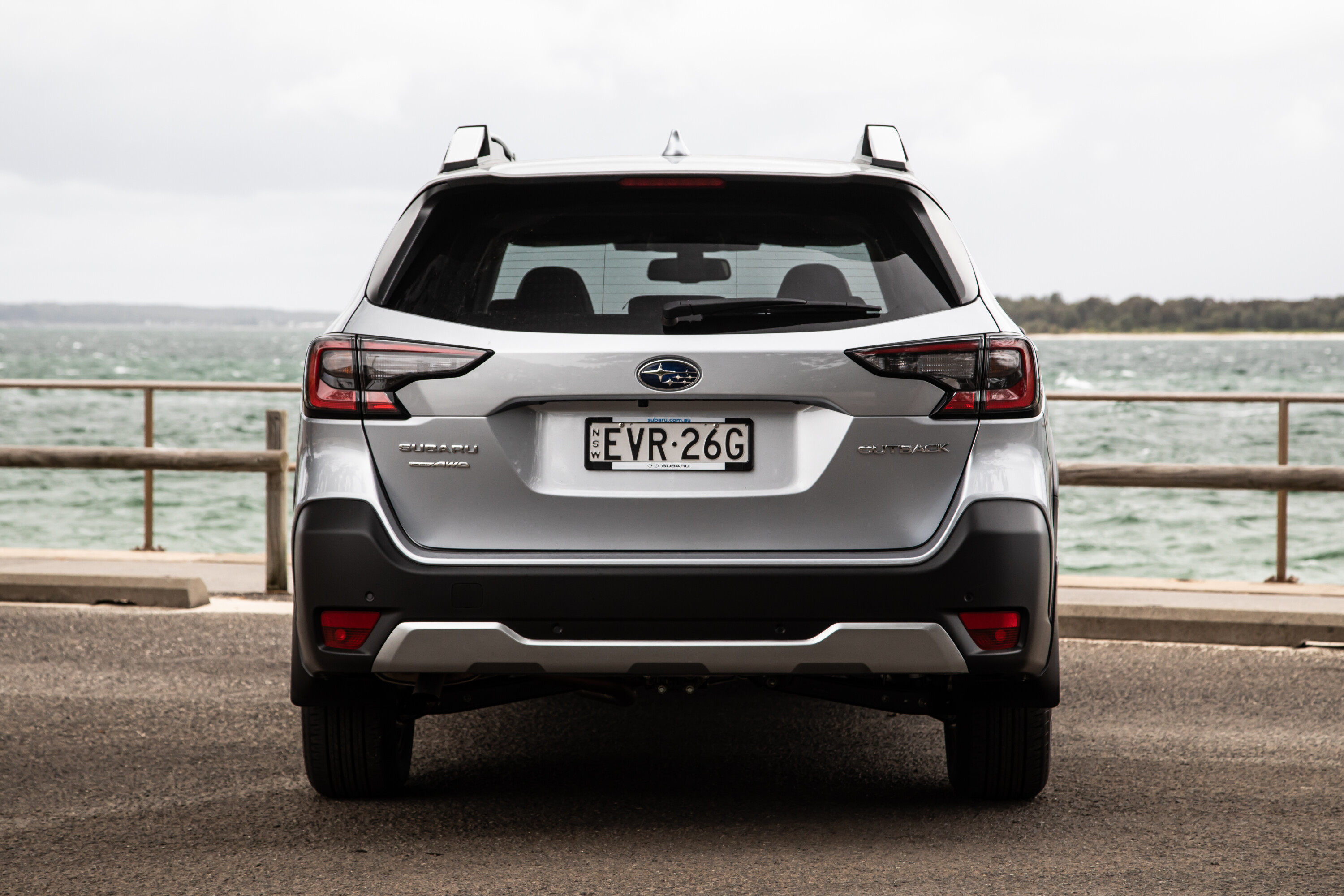
JUMP AHEAD
- How much is it, and what do you get?
- How do rivals compare on value?
- Interior comfort, space and storage
- What is it like to drive?
- How much fuel does it use?
- How safe is it?
- Warranty and running costs
- VERDICT
- Specifications
How much is it, and what do you get?
Confusingly, VFACTS classifies the Outback as a large SUV when it is clearly a high-riding midsize wagon like the VW Passat Alltrack.
The Outback range starts at $42,690 for the entry-level car, rising to $50,990 for this Touring via the $47,190 for the Sport (all before on-road costs).
On the Sport and Touring, for an extra $5000 you can upgrade from the 2.5-litre naturally aspirated petrol engine to a 2.4-litre turbo-petrol (and XT badges), taking power and torque outputs from 138kW/245Nm to 183kW/350Nm.
| 2023 Subaru Outback Touring standard features | |
|---|---|
| 18-inch gloss alloy wheels | 11.6-inch central touchscreen |
| 9-speaker Harman Kardon audio | Sunroof |
| Wireless Apple CarPlay | Wireless Android Auto |
| Roof rails | Nappa leather upholstery |
| Heated steering wheel | Powered tailgate |
| Heated, ventilated and powered front seats | Heated rear seats (outboard) |
| Dual-zone climate control | DAB+ digital radio |
| Keyless entry and start | Reversing camera |
| 360-degree cameras | Adaptive cruise control |
| Auto LED headlights with shadowing | Auto wipers |
| Satellite navigation | Front parking sensors |
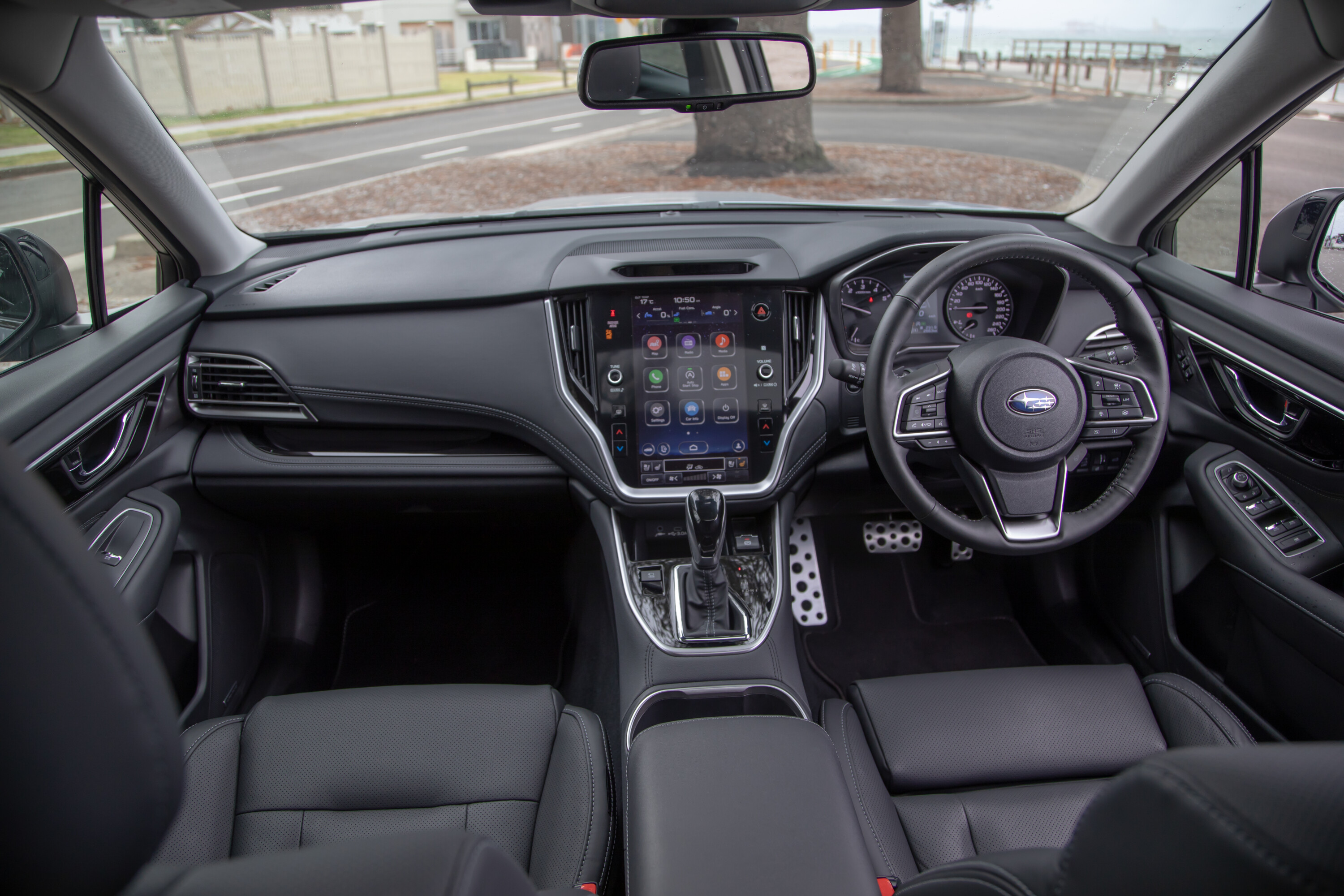
The huge 11.6-inch touchscreen with Subaru’s Starlink software is standard across the range and while it looks impressive, the graphics are a bit old hat. All that is sorted when you connect your phone, though.
While most menu items are not where you might not expect them to be and the sheer height of the climate control temperature settings seems a bit much, the hardware is reasonably quick to respond. Still, it’s a lot better than some other car companies can manage and most of my complaints are subjective.
This version of the car has Subaru’s driver monitoring system. You register your face with it so when you get in, it will adjust your mirrors and driver’s seat to the way you last left them.
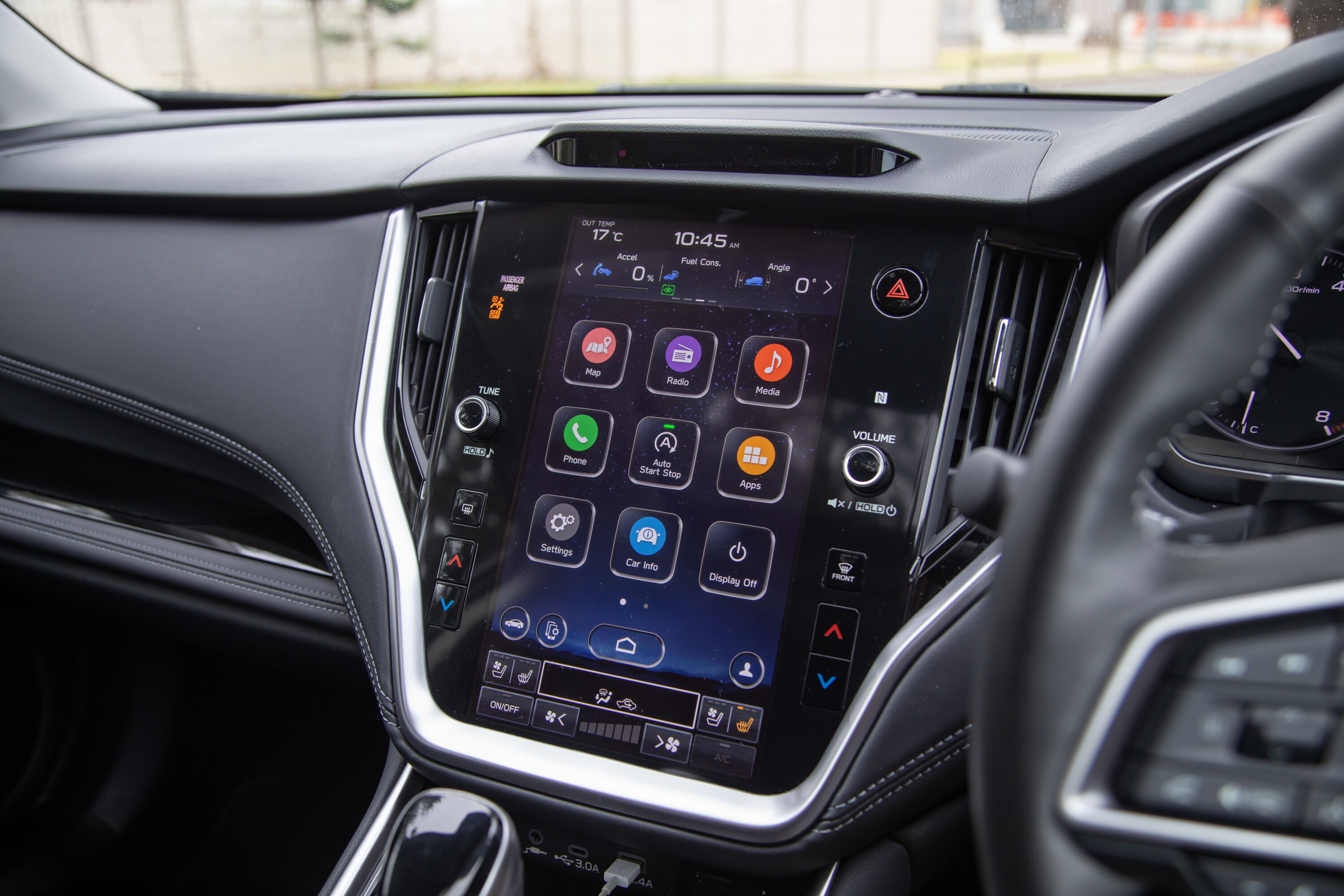
How do rivals compare on value?
Volkswagen’s Passat Alltrack might be a niche player but it’s about as close as you’ll get to the Outback concept from anyone else.
The Passat Alltrack range starts at $51,390 for the 162TSI 2.0-litre turbo-petrol engine with a seven-speed dual-clutch automatic transmission and maxes out at $63,390 for the 162TSI Premium.
With 162kW and 350Nm, it is more powerful than the naturally aspirated Outback tested here and even if you went for a turbocharged Outback XT that matches the VW closer on price, some may prefer the German car’s dual-clutch over Subaru’s continually variable transmission (CVT).
Skoda’s Superb Scout has departed these shores, so the Alltrack is about it.

Interior comfort, space and storage
The Outback is a whisker under 4.8 metres long, so there’s a lot of space inside to play with.
I think a key point about the Outback is accessibility. It’s a mid-rise SUV so you are not stepping up into it like you might with taller models like the Santa Fe or Kluger. For shorter or less mobile folks, this makes entry and egress easier.
The boot starts at a pretty decent – although unexpectedly small (relatively speaking) – 522 litres. Put down the seats and you’ve got 1267 litres. There are a couple of nice-to-haves like netted pockets and grocery hooks as well as a cargo blind.
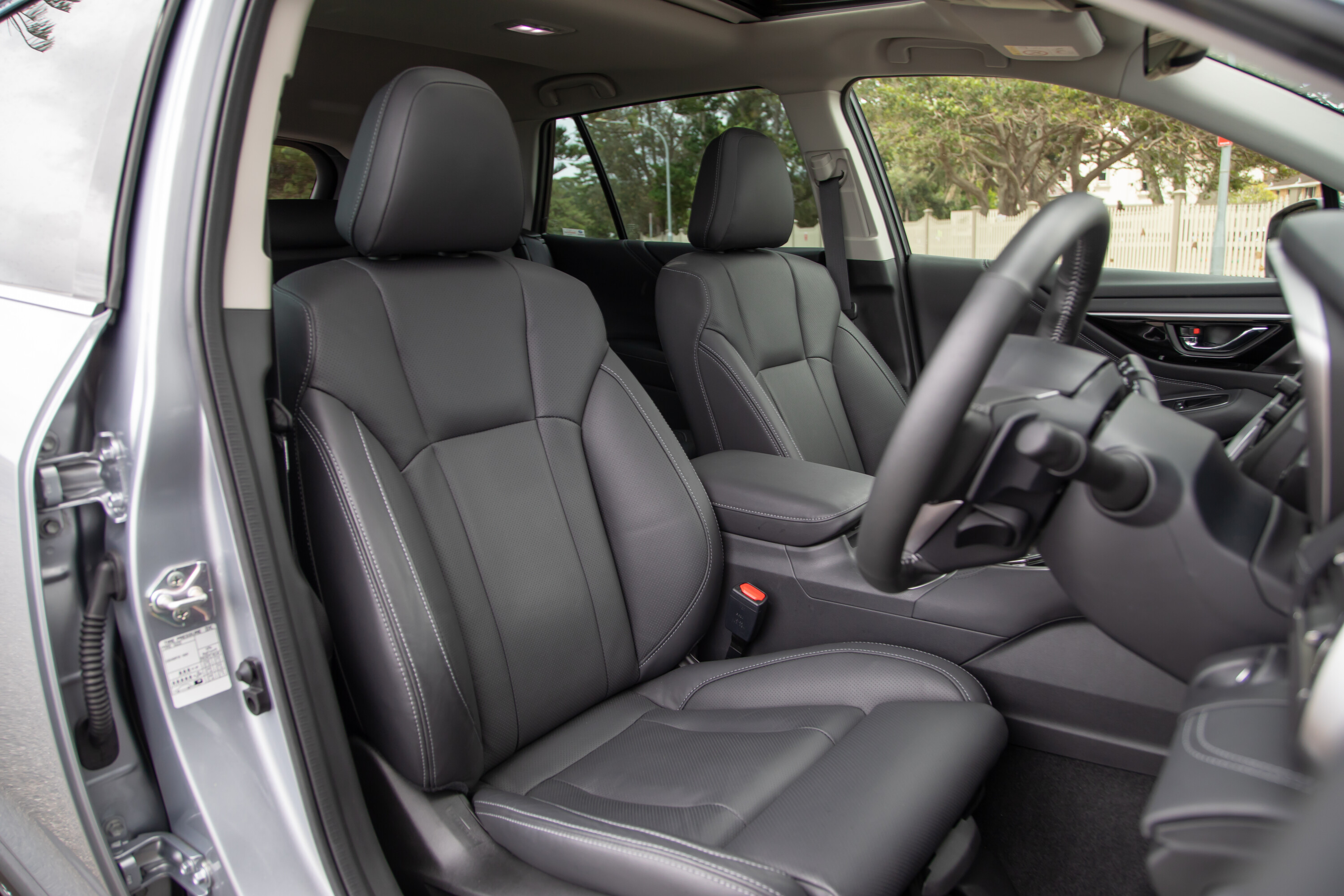
The spare wheel is under the boot floor, which itself is flat and not too high off the ground. The electric tailgate is also quite handy and you can open it from the key fob.
Rear-seat space is expansive and just as good as genuine large SUVs. Lots of head, knee and leg room make it a very comfortable place to be, although you have to remember to stow the headrests or they can hamper rear visibility when there’s nobody in the rear seat.
Outboard rear seats are heated in this top-spec Outback, a bit of a rarity in Australia. You also get two USB-A ports and air vents, as well as a fold-down armrest with cup holders. The doors will hold bottles, too.
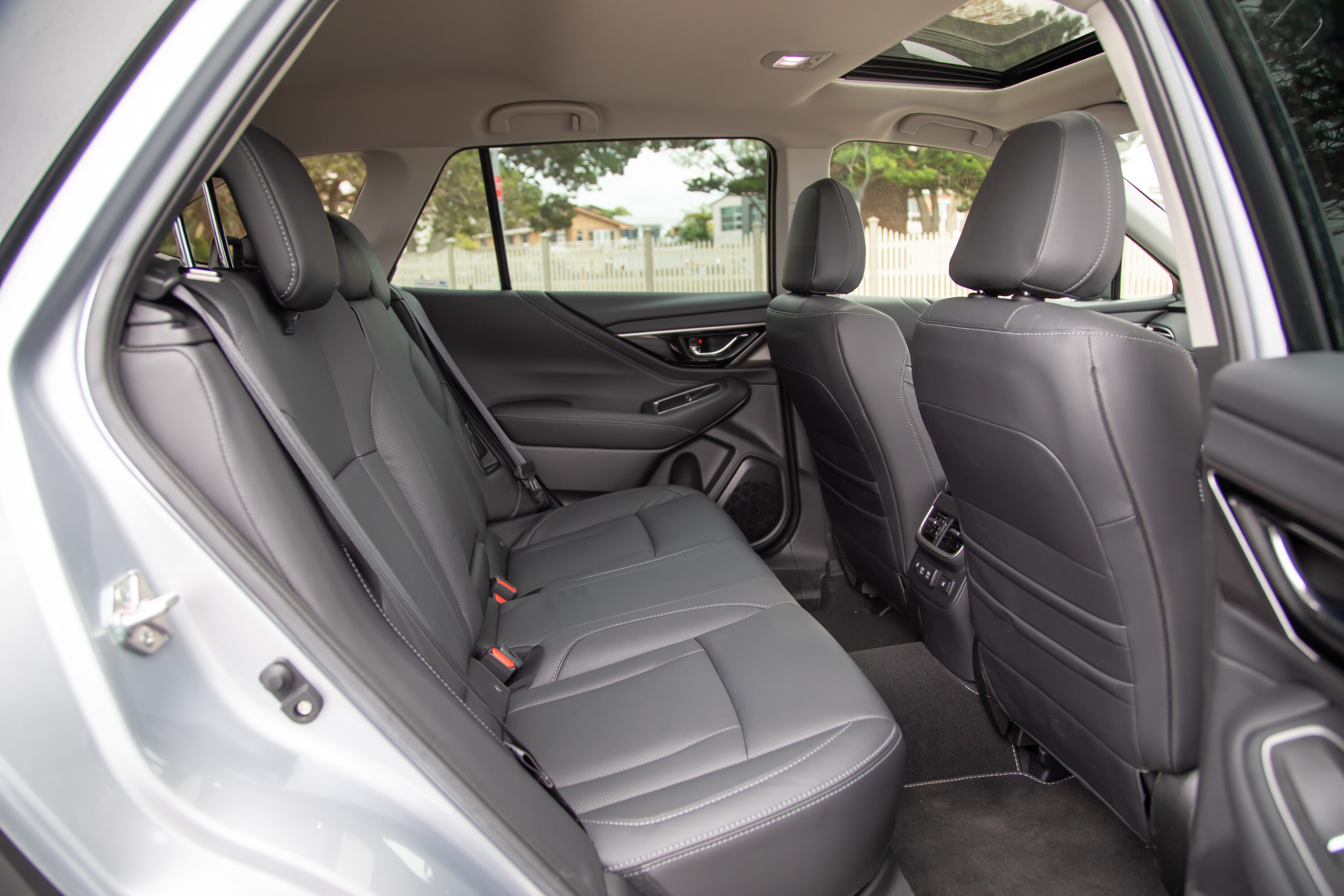
The front seats are as comfortable as they look, which reinforces the car’s credentials as a bit of a tourer while also being great for the day-to-day.
You get a pair each of bottle and cup holders, and a reasonably-sized centre console bin under the armrest. Annoyingly, the slot for your phone has no wireless charging. There are two USB-A ports in there and an AUX jack.
There is a Kluger/RAV4-style shelf in front of the passenger, which is an alternative place for a phone. The leisurely acceleration will not deposit it on the floor.
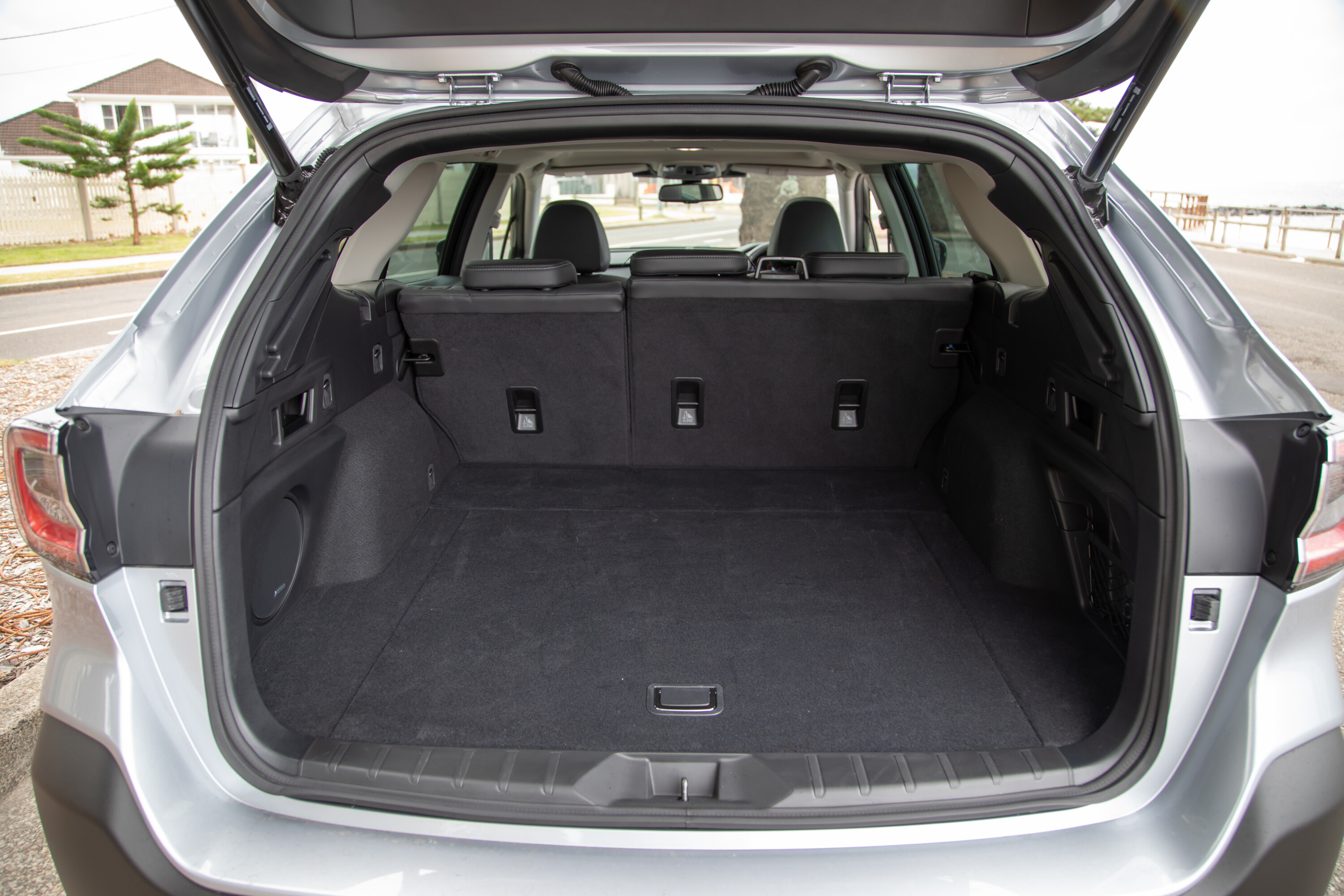
What is it like to drive?
What you need to know first about the Outback is that it is extremely comfortable.
The Subaru shared a driveway with our long-term Nissan X-Trail Ti, which itself is one of the most comfortable cars this side of a Rolls-Royce, so it had a pretty stiff reference car to contend with.
Obviously, the Outback has its more sensible ride height going for it and it’s a little slipperier through the air, so it’s also very quiet.
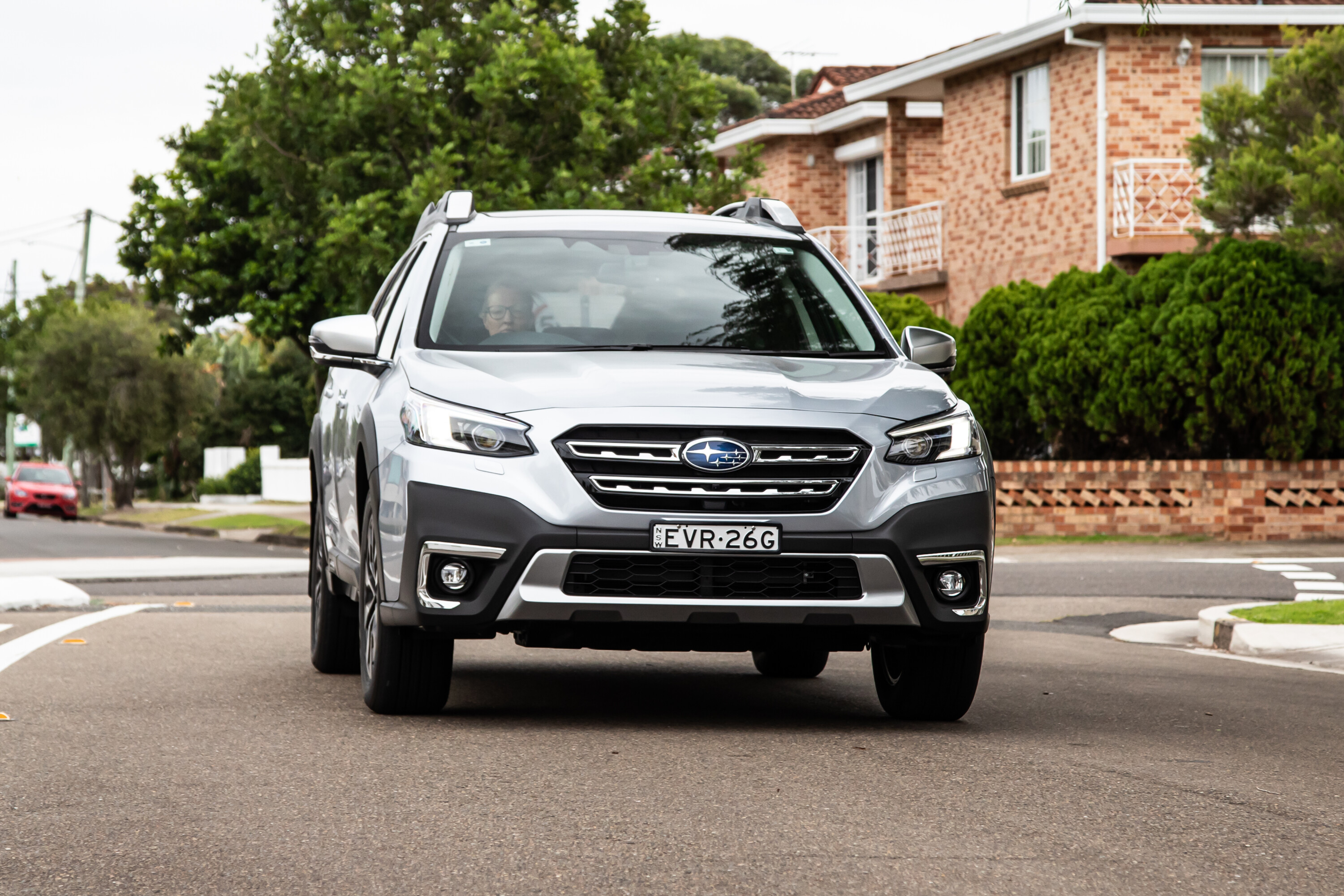
| 2023 Subaru Outback Touring drivetrain | |
|---|---|
| Drive | all-wheel |
| Engine | 2.5-litre naturally aspirated horizontally-opposed four-cylinder petrol |
| Transmission | continuously variable (8 simulated stepped ratios) |
| Power | 138kW @ 5800rpm |
| Torque | 245Nm @ 3400-4600rpm |
Quiet. Now there’s a point. CVTs, a transmission type I do not like, tend to drone a bit under acceleration or on hilly roads.
Some might say I’m the same. This one has been to a much better school than I did because it’s largely well-behaved and even polite when provoked.
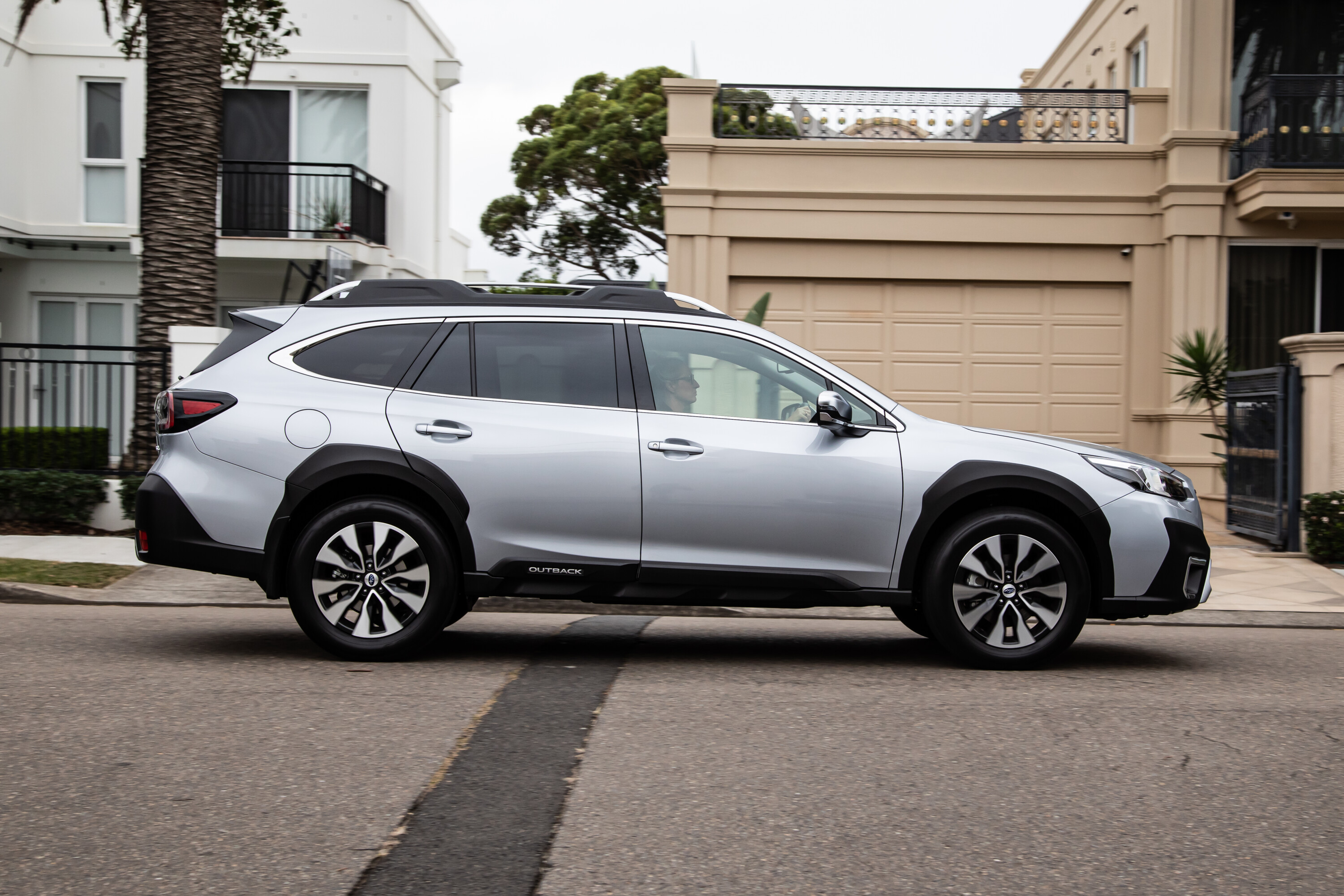
Add in some extra journey time if there are hills involved is what I’m saying.
Subaru’s engineers have created eight steps in the transmission to make it feel more “natural” but with a flattened right foot, those steps are largely abandoned for the full force of, erm, 138kW.
Look, it’s not a lot but thankfully one of the Outback’s features is a low-ish (by modern standards) kerb weight. You wouldn’t call it quick – most cars will round you up in the Outback – so if you’re a fan of grunt, you’ll need to look at the returned prodigal son, the Outback XT.
A genuine advantage of the CVT is that this type of transmission is quite good in torque-limited applications like this. While 248Nm isn’t anaemic, it’s also not a lot to move this much car around, less so when loaded up and towing its rated 2000kg maximum. Add in some extra journey time if there are hills involved is what I’m saying.
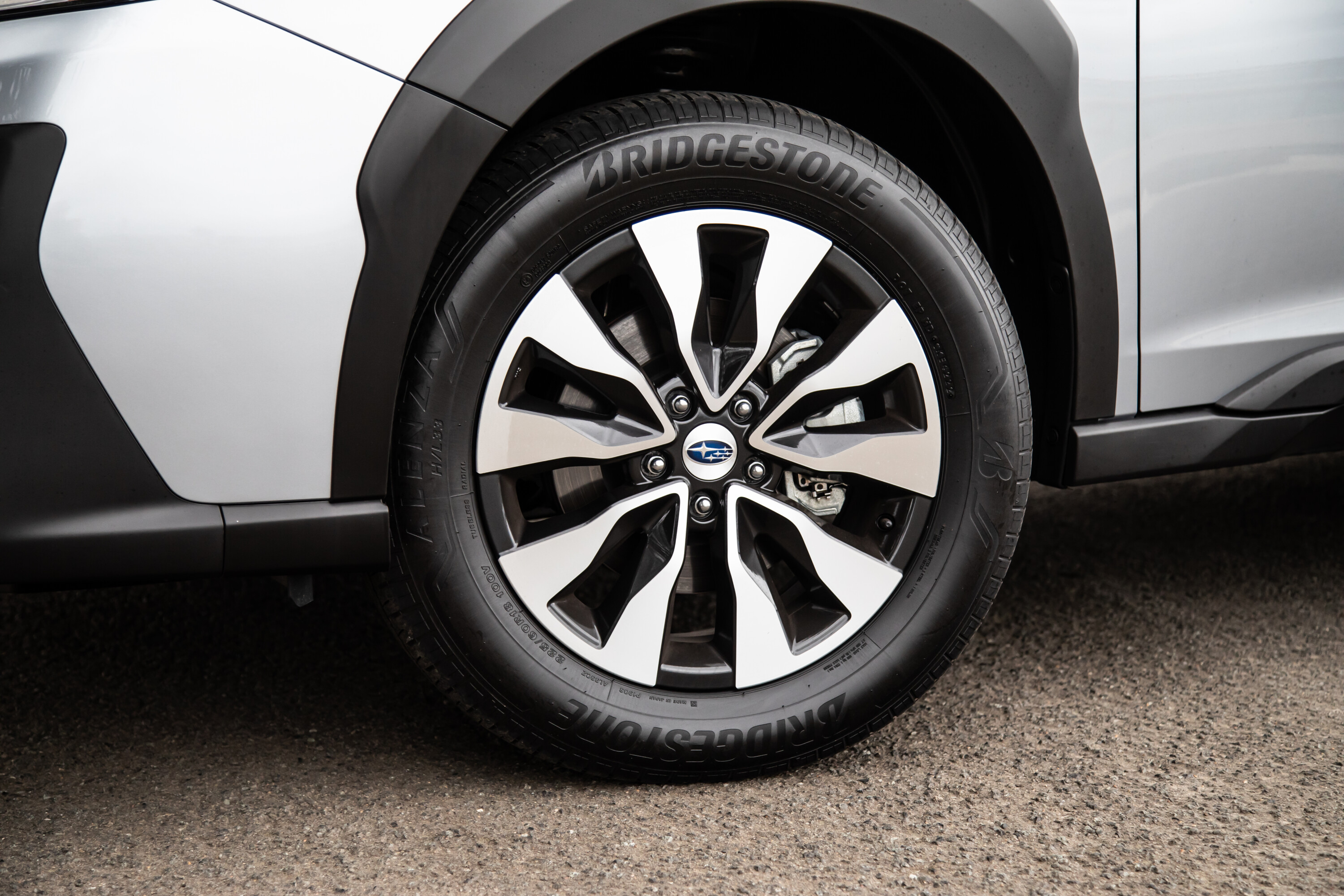
If any of the terms in this section have left you scratching your head, these articles will help bring you up to speed!
- What is a Powertrain or Drivetrain?
- Power vs torque
- Car suspension explained
- Automatic transmissions (‘gearboxes’) explained
- Chassis control systems explained
- Car vs Ute vs SUV: How the vehicle you buy should guide the way you drive
Subaru says you’ll get 7.3L/100km on the combined cycle. I had no such luck, but it wasn’t too bad at 9.7L/100km.
| 2023 Subaru Outback Touring fuel economy | |
|---|---|
| Fuel consumption (claimed) | 7.3L/100km |
| Fuel consumption (on test, indicated) | 9.7L/100km |
| Fuel type | 91 RON |
| Fuel tank capacity | 63 litres |
| Theoretical real-world range | 650km |
The week we had the Outback consisted of an almost 50:50 split of suburban and motorway driving. As I discovered the following week with an XT, an engine that doesn’t have to work so hard delivered a better fuel economy result in largely the same conditions.
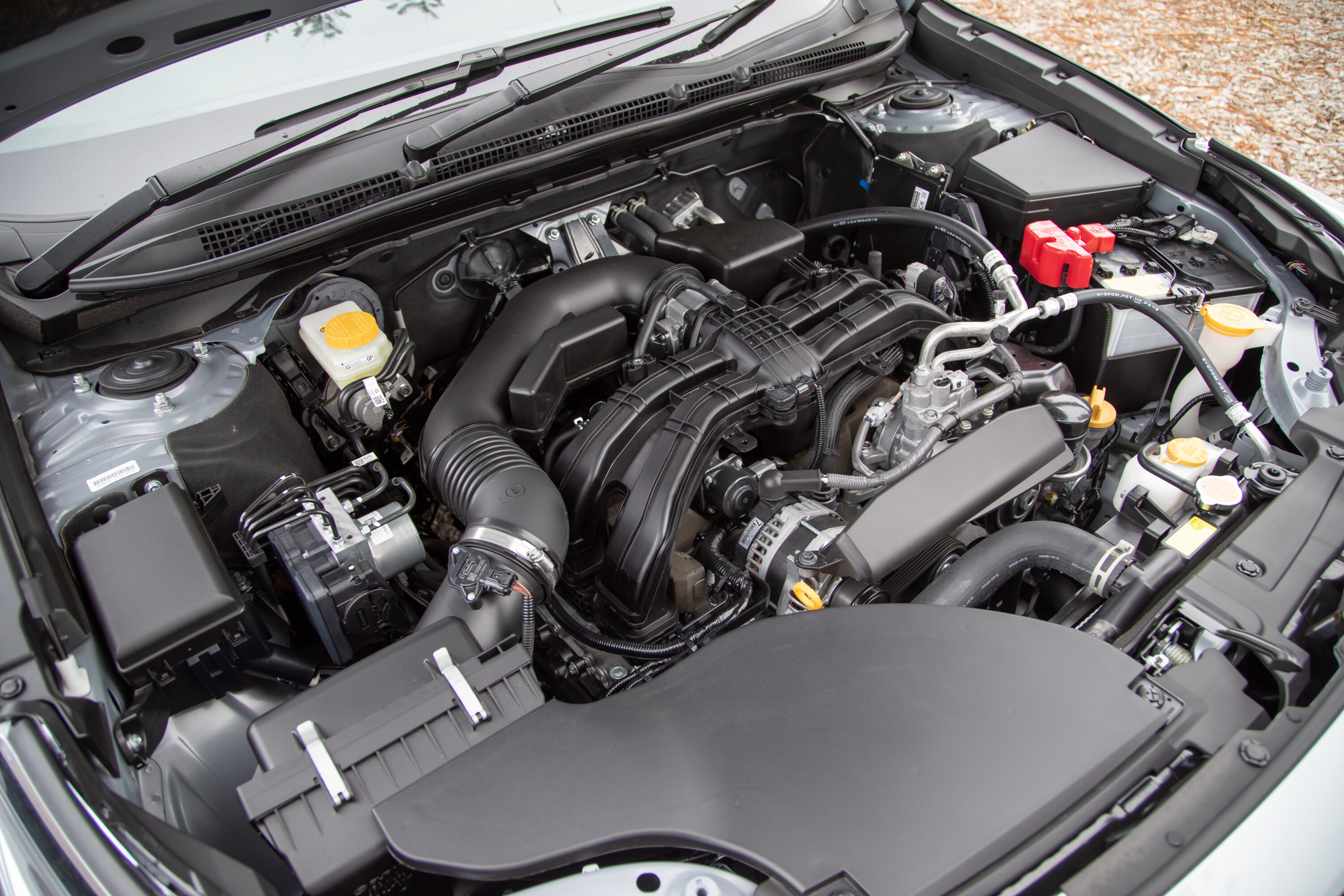
How safe is it?
ANCAP tested the Outback in September 2021 and updated its report in December 2022, retaining the five-star safety rating.
| 2023 Subaru Outback Touring safety features | |
|---|---|
| Eight airbags | ABS |
| Stability and traction controls | Forward auto emergency braking |
| Autonomous emergency steering | Lane-keep assist |
| Lane centring | Speed sign recognition |
| Lane departure warning | Lane departure prevention |
| Blind-spot monitoring | Rear cross-traffic alert |
| Front cross-traffic alert | |
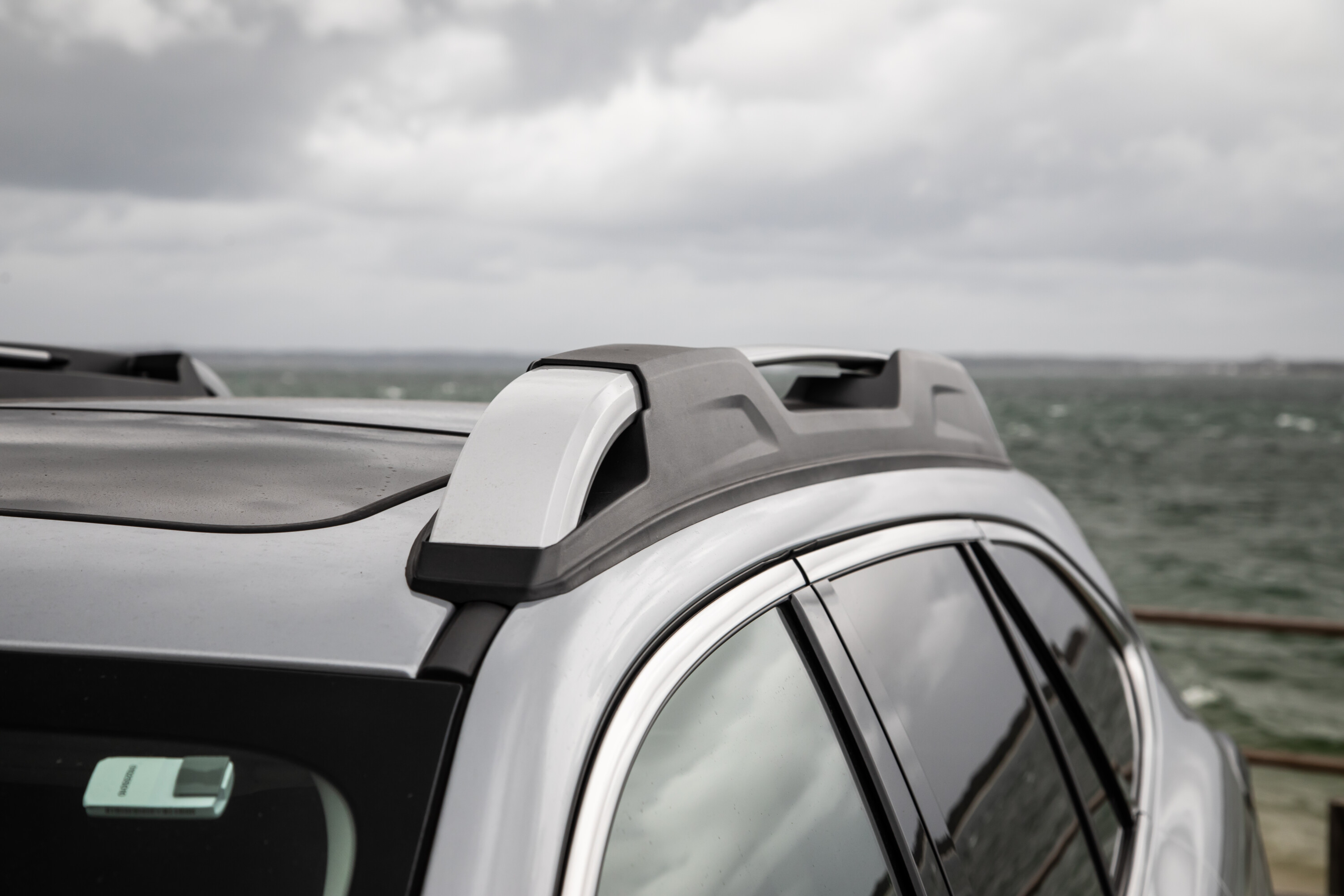
A sort-of front centre airbag is positioned in the passenger seat cushion and doubles as an anti-submarining device, which is rather clever.
Though ANCAP doesn’t count it as a front-centre airbag, it is intended to lessen the danger of occupants colliding in an accident.
Subaru’s (in)famous EyeSight system is responsible for most of the safety features but as ever, it’s a bit hit and miss. It gets very panicky about cars coming the other way on bends and was always shouting at me for not paying attention when I was. On the upside, the steering assist isn’t as pushy as, say, a Kia or Hyundai.
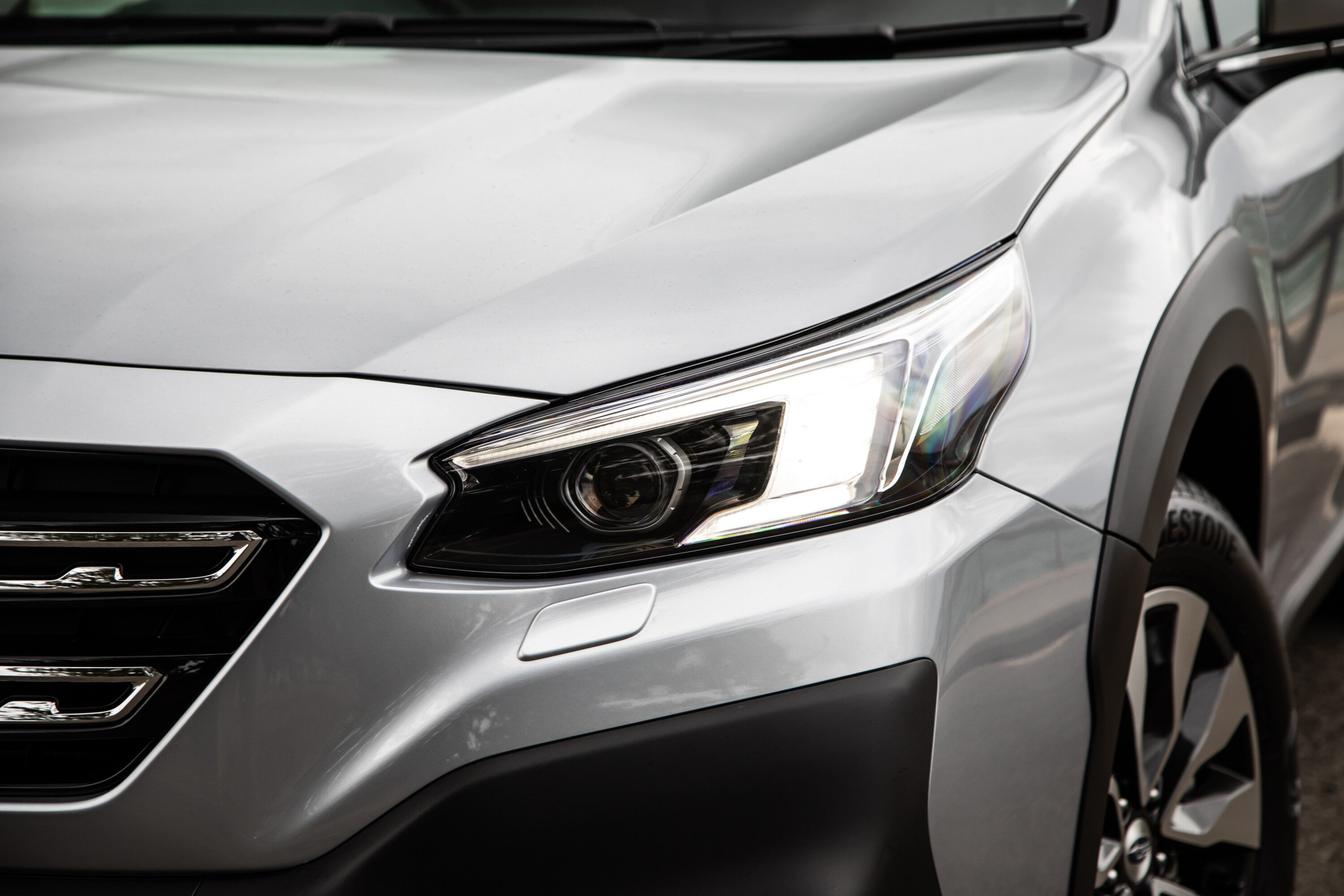
Warranty and running costs
Subaru sends the Outback into the world with a five-year/unlimited-kilometre warranty.
The company also offers two pre-paid service plans; three and five years. The former will cost $1387.25 or $462 per service. The latter jumps $1300 for the final two years to $2674.64 (correct as of June 2023) for five services at an average of $535. PAYG pricing is the same but subject to change whereas when you pay upfront, you’re locked in and can roll the maintenance costs into your finance.
Bizarrely, it costs more to service this Outback than one with the more complicated turbo engine, which to add insult to injury, has longer service intervals. The non-turbo engine’s 12 months/12,500km is slightly weird but the turbo’s is a more conventional 12 months/15,000km.
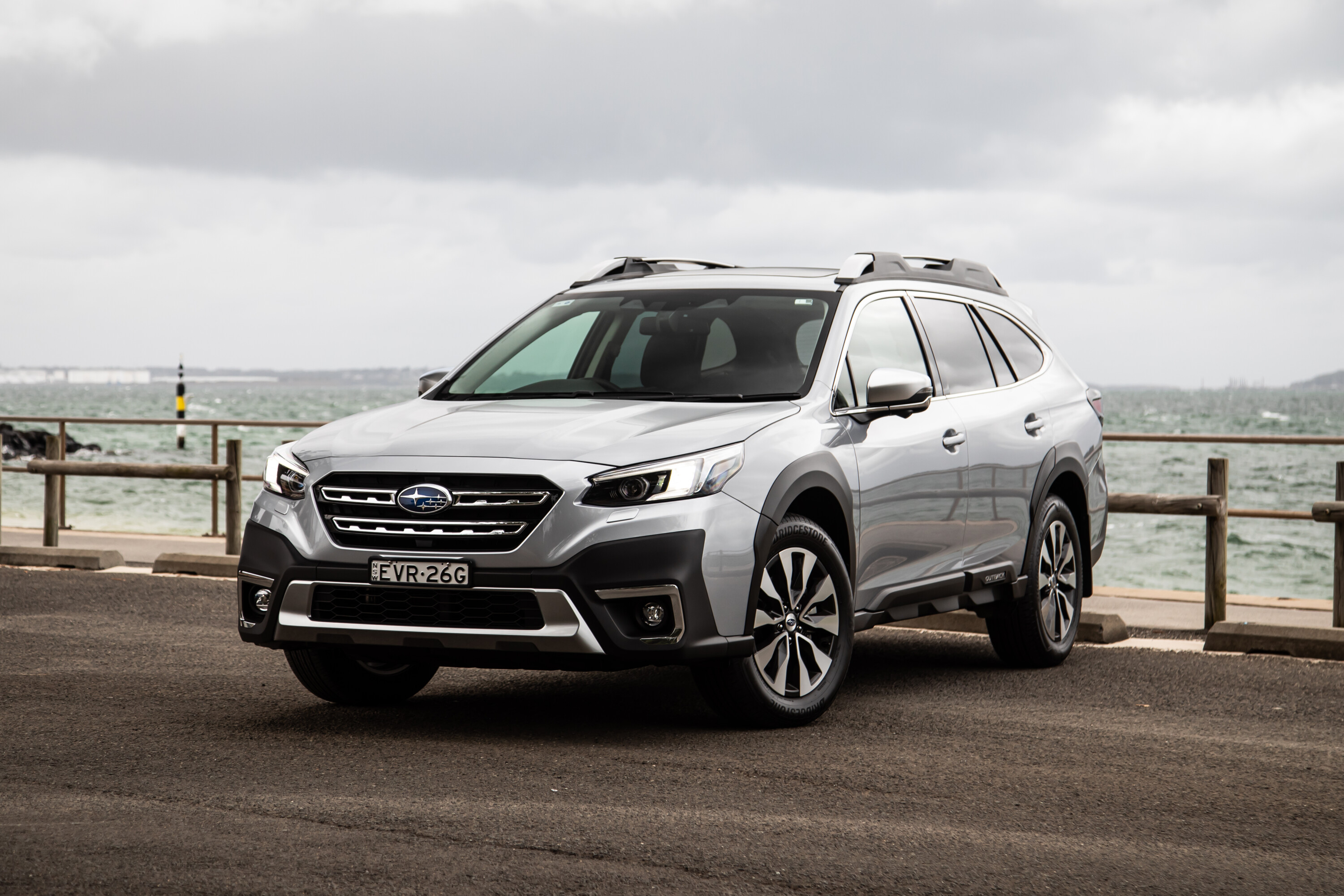
VERDICT
The Outback delivers on all the things Outback owners like – space, some thoughtful touches, respectable off-road ability and a boxer engine.
Subaru fans are a loyal bunch in a way you can stomach – unlike some other fandoms. So if you’re looking for a new Outback, this is a pretty good effort. As a top-spec version, there are some nice touches in the Touring, but the mid-spec Sport has a slightly more rugged interior if muddy boots and/or sandy bottoms are going to spend time in it.
However, at this price point, you’re not far from a turbocharged Sport XT, which is worth looking at if you want a bit more go in exchange for less equipment.
| 2023 Subaru Outback Touring specifications | |
|---|---|
| Body | 5-door, 5-seat large SUV (but more like a midsize wagon with a lift kit) |
| Drive | all-wheel |
| Engine | 2.5-litre naturally aspirated horizontally-opposed four-cylinder petrol |
| Transmission | continuously variable (8 simulated stepped ratios) |
| Power | 138kW @ 5800rpm |
| Torque | 245Nm @ 3400-4600rpm |
| Bore stroke (mm) | 94.0 x 94.0 |
| Compression ratio | 12.0 : 1.0 |
| 0-100km/h | 10 sec (estimate) |
| Fuel consumption | 7.3L/100km (combined) |
| Weight | 1626kg |
| Suspension | MacPherson struts front/double wishbone rear |
| L/W/H | 4870mm/1875mm/1675mm |
| Wheelbase | 2745mm |
| Ground clearance | 213mm |
| Brakes | 315mm ventilated disc front /300mm solid disc rear |
| Tyres | 225/60 R18 |
| Wheels | 18-inch alloy (full-size alloy spare) |
| Price | $50,990 + on-road costs |
Score breakdown
Things we like
- Very comfortable
- Plenty of space
- Excellent ride
Not so much
- Not a lot of power
- CVT not much help
- Service pricing
We recommend
-
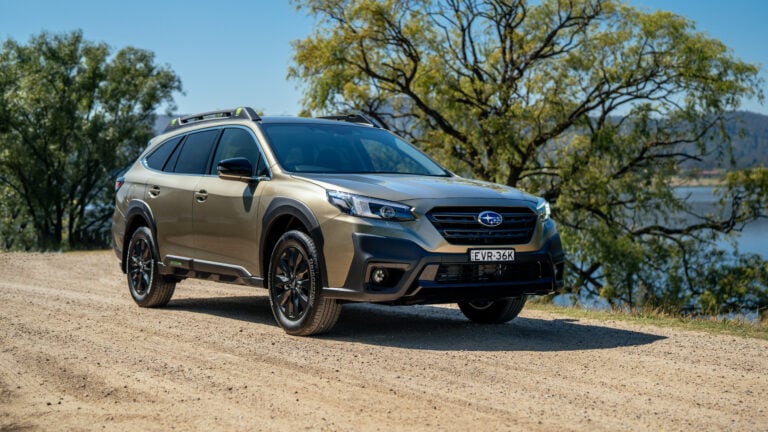 News
News2023 Subaru Outback pricing: XT turbo joins expanded range
Subie brings turbo power back to its petrol Outback
-
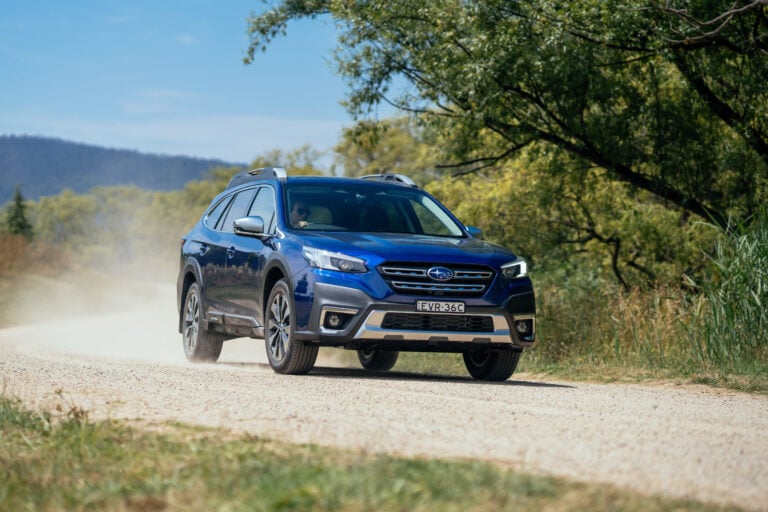 Reviews
Reviews2023 Subaru Outback XT turbo review: First Australian drive
Newfound turbo power puts the Subaru Outback in front
-
 News
NewsNew car calendar 2026: All the new cars coming to Australia next year
Here’s the WhichCar by Wheels guide to all the new cars that will launch in Australia in 2026. Check back in regularly for updates...





